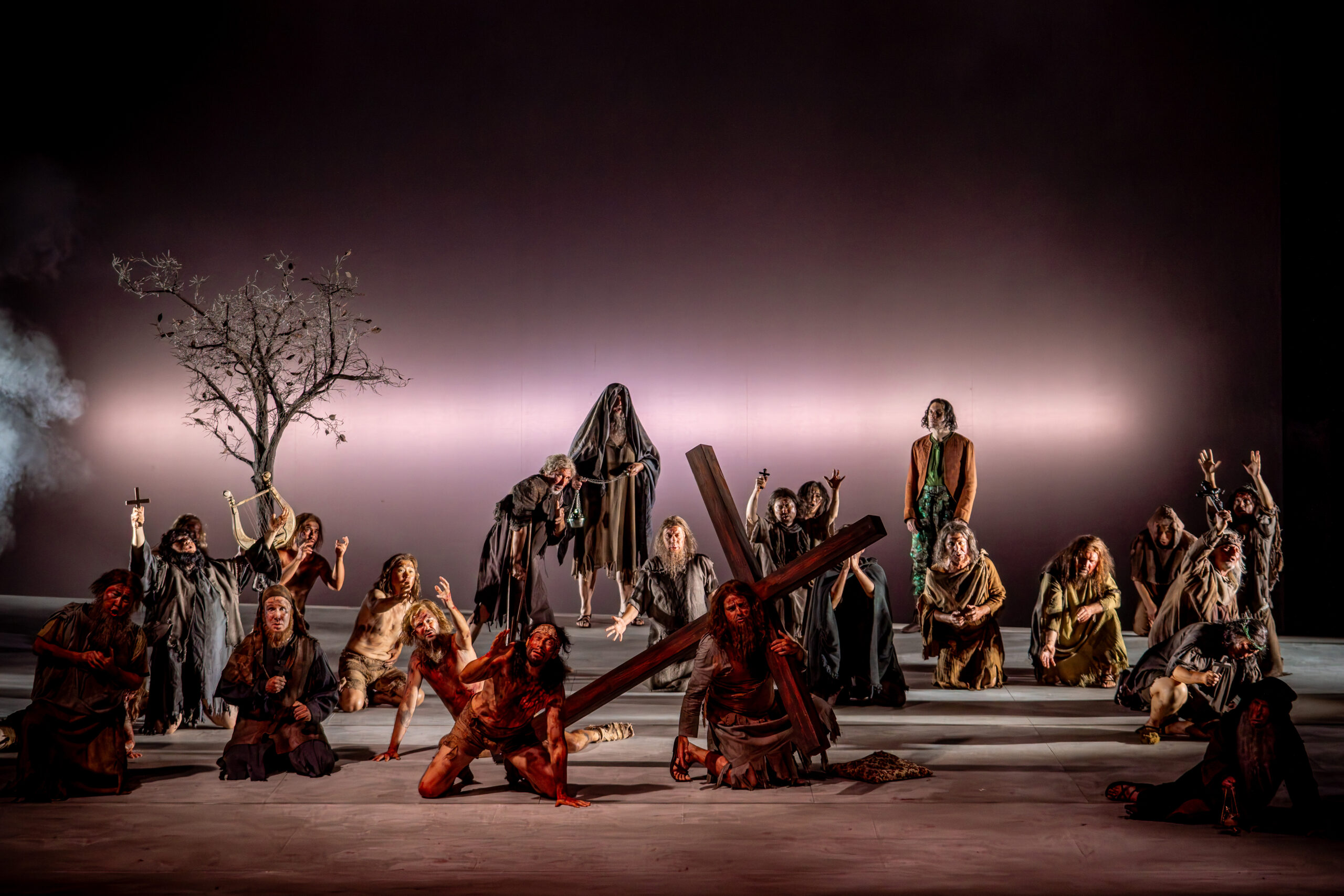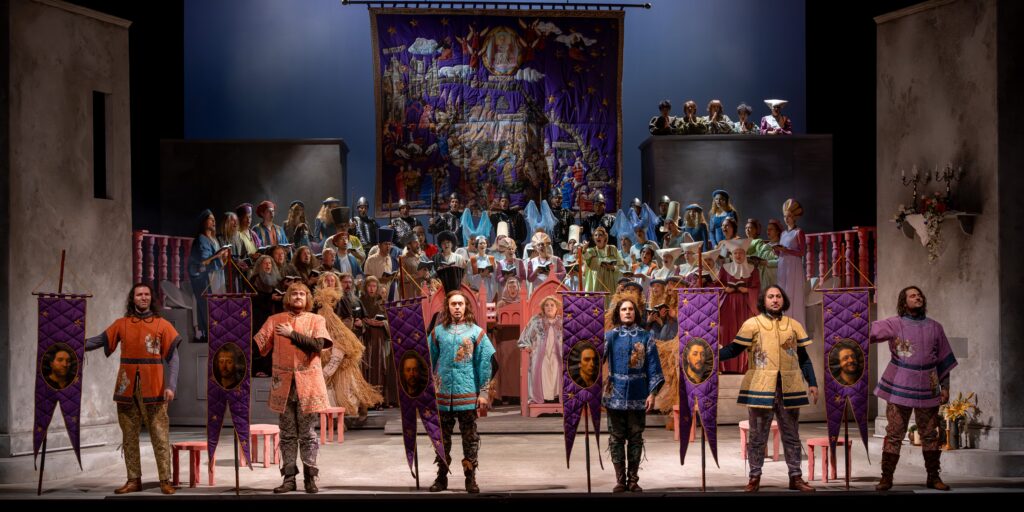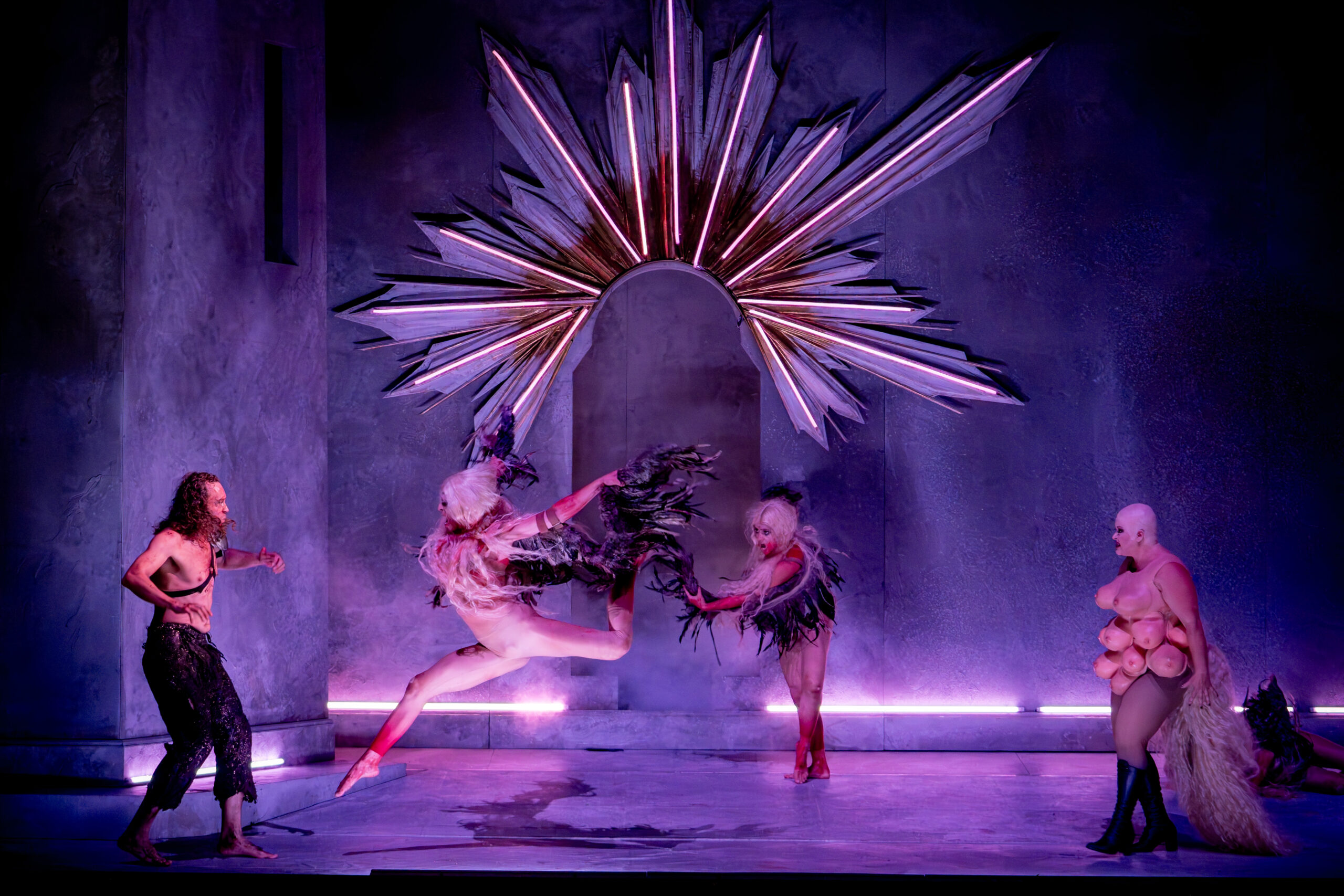Psychological Portrait and Church Critique: Adele Thomas presents a successful and compelling interpretation of Tannhäuser in her Wagner debut at Theater Magdeburg. Erik Nielsen, conducting the Magdeburg Philharmonic, delivers a taut and finely nuanced musical realisation that fits perfectly.
“He says he still owes the world his Tannhäuser,” Cosima Wagner quoted her husband in January 1883, just two months before his death. A statement with good reason: no longer a youthful work in musical terms, and equipped with new compositional tools, Wagner, the skilled dramatist, was well aware of the challenges posed—especially dramaturgically—by the ending of ‚Tannhäuser und der Sängerkrieg auf Wartburg‘. And rightly so: the final image, in which the Pope’s staff—previously barren—miraculously returns bearing green leaves, is a deeply symbolic moment. It reappears after the Pope had earlier denied Tannhäuser absolution, declaring:
“Just as this staff in my hand shall never again be adorned with fresh green, so shall redemption never bloom for you from the fiery depths of Hell!”
In the great choral finale of the young pilgrims—when they return with the now green papal staff, and Elisabeth, not having died on stage, is carried on as if deceased—Tannhäuser collapses, seemingly redeemed. This ambiguous and symbol-laden sequence remains a major challenge for any staging. Wagner, who elsewhere takes such pains to highlight key elements slowly and deliberately, ends Tannhäuser suddenly and musically abruptly—posing additional difficulties for the pit and often leaving audience members unfamiliar with the work puzzled. Wagner’s own multiple revisions don’t necessarily resolve this, so his late comment remains entirely justified.
British director Adele Thomas has now tackled the frequently performed Dresden version of the work—and she meets the challenge of the green staff with clarity and, above all, a compelling and coherent solution.
From the very beginning—in the overture to Act I—we are presented with a striking image: on a stage hemmed in by grey walls (Cécile Trémolières’ set design), a Catholic-style Marian niche with painted halo dominates. First the chaste, pure Elisabeth, then Venus—wearing the same Marian attire—stand within it. The protagonists process solemnly across the stage like in a Corpus Christi parade. Tannhäuser, seated at stage right like a tormented Christ, hands Elisabeth a dried staff. She joins the ever-circling procession—an image of repetition and inevitability. It’s a powerful opening tableau that continues to resonate.
The Shepherd (Elvire Beekhuizen with a youthful and clear interpretation of the Shepherd’s Song) acts throughout the piece as messenger, mediator, and subtle initiator of the redemption symbolised by the greening staff. Already in Act I, he urges Tannhäuser to join the procession. During his aria, he brings on a green tree and plants it into the stage floor. Upon returning to the Wartburg world, Tannhäuser immediately breaks off a branch from this tree—only to see the leaves fall from it in his hands. By Act III, the tree stands dried and bare—a clever visual reflection of Wagner’s critique of Catholicism.

At the end of the opera, Elisabeth rises again from her bier after the young pilgrims bring in the green staff. She sits beside Tannhäuser at the front right of the stage—mirroring the opening image of Act I. A symbol of eternal return. In this reading, Tannhäuser appears truly redeemed. Judging by the audience’s applause, this interpretation was well received. The occasional boos directed at the production seemed more like ritualised reactions than genuine critique.
James J. Kee gives a striking performance as Tannhäuser, with compelling stage presence and a palpable sense of suffering—both internal and external—as he is torn between the worlds of Venus and Elisabeth. Bare-chested, bloodied, and with a piece of broken armour slung across his shoulder, he is very much the image of a Christian, redemption-seeking Christ figure. Tentative at first, especially in the Venus scene where textual clarity slightly hinders musical flow, he builds momentum powerfully, delivering a gripping Rome Narration in Act III with dark-toned, expressive vocal colouring.
Aurora Marthens, as Elisabeth, delivers the musical high point of the premiere day with a youthful, tender and nuanced rendition of the Hall Aria in Act II. The rigid, traditional Wartburg society is satirised with exaggeratedly silly, kitschy-bright costumes, caricaturing the stereotypical past of performance history and the conventions of static, proscenium-bound theatre.

Tannhäuser’s urge to break free is entirely plausible—especially having already fled the similarly overdrawn Venus realm, here presented as a gender-fluid, grotesque underworld populated by screeching bird-like sirens who evoke Edvard Munch’s The Scream in their exaggerated, silent outbursts—a visual metaphor for hellish sexuality. While this is an intriguing directorial idea, the endlessly repeated gestures and stylised movements throughout the Venus scene become somewhat tiresome. Less might have been more here.
In Act II, the grotesque masks of the Venus-vultures emerge from within Tannhäuser during the Sängerkrieg. He clutches at his trousers in a moment of despair—visibly disturbed, paranoid, almost schizophrenic. A scandal for the pious Wartburg world. As vividly portrayed as Tannhäuser’s “sin” is here, this production renders the Venus realm as deeply evil and damnable—just as much as the chaste, repressive Wartburg. Whether or not this contradicts the work’s deeper intentions is a matter for debate. After all, Venus and Elisabeth can justifiably be seen as opposing yet equal forces, complementing one another. Depicting sexuality so bluntly as evil risks appearing somewhat naïve or overstated.

The chorus, prepared by Martin Wagner, excels with warm harmonic clarity, well-matched to the relatively lean orchestral sound in the pit, avoiding overpowering the texture. Some moments in Act II reveal coordination issues between chorus and orchestra. Jadwiga Postrożna’s Venus, whose costume is adorned with multiple breasts, is vocally a little one-dimensional and lacks nuance. Marko Pantelić’s Wolfram is lyrically sensitive and finely shaped. His ‚Abendstern‘-Aria is perhaps a touch too delicate, but delivered with precision and purity. Johannes Stermann’s Landgrave impresses with rounded tone and expressive strength.
Erik Nielsen commands attention with a thoughtful yet firm approach from the podium—avoiding bombast while uncovering the score’s intricate detail and maintaining long-form musical tension. The prelude to Act III is rendered with particular density and depth.
Further performances: 27 September, 5 & 19 October, 16 November, 13 December, 4 January.